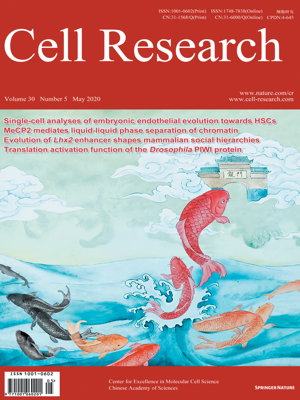
Advanced Search
Submit Manuscript
Advanced Search
Submit Manuscript
Volume 30, No 5, May 2020
ISSN: 1001-0602
EISSN: 1748-7838 2018
impact factor 17.848*
(Clarivate Analytics, 2019)
Volume 30 Issue 5, May 2020: 446-448
Cryo-EM structure of human heptameric Pannexin 1 channel
Ronggui Qu1,2 , Lili Dong3,4 , Jilin Zhang5 , Xuekui Yu3,4,* , Lei Wang1,6,* , Shujia Zhu5,*
1Institute of Pediatrics, Children’s Hospital of Fudan University and Institutes of Biomedical Sciences, State Key Laboratory of Genetic Engineering and School of Life Sciences, Fudan University, Shanghai 200032, China;Dear Editor,
Cellular communication is crucial during basic development and in the maintenance of homeostasis in adult organisms, and such communication involves the connexin and pannexin (PANX) families of large-pore channels. The PANX family was identified in 20001 and consists of PANX1, PANX2, and PANX3.2 Among the three subtypes, the most studied is PANX1 because of its potential effects on multiple physiological and pathological functions,3 including microbial infection, cancer progression, ischemia, and neurological disorders. Very recently, we also identified mutations in PANX1 causing familial female infertility characterized by oocyte death.4 PANX1 is a major ATP release and nucleotide permeation channel, which is N-glycosylated and forms three species, GLY0, GLY1, and GLY2.5 Cleavage of the C-terminus by Caspase 3/7 activates the channel and causes the release of ATP and UTP, which functions as a “find-me” signal during apoptosis.6 It is also known that membrane distortion or increased intracellular calcium or extracellular potassium levels can activate the channel.7 In addition, PANX1 channel activity can be regulated by various receptors to maintain cellular electrochemical and metabolic homeostasis.8
https://doi.org/10.1038/s41422-020-0298-5